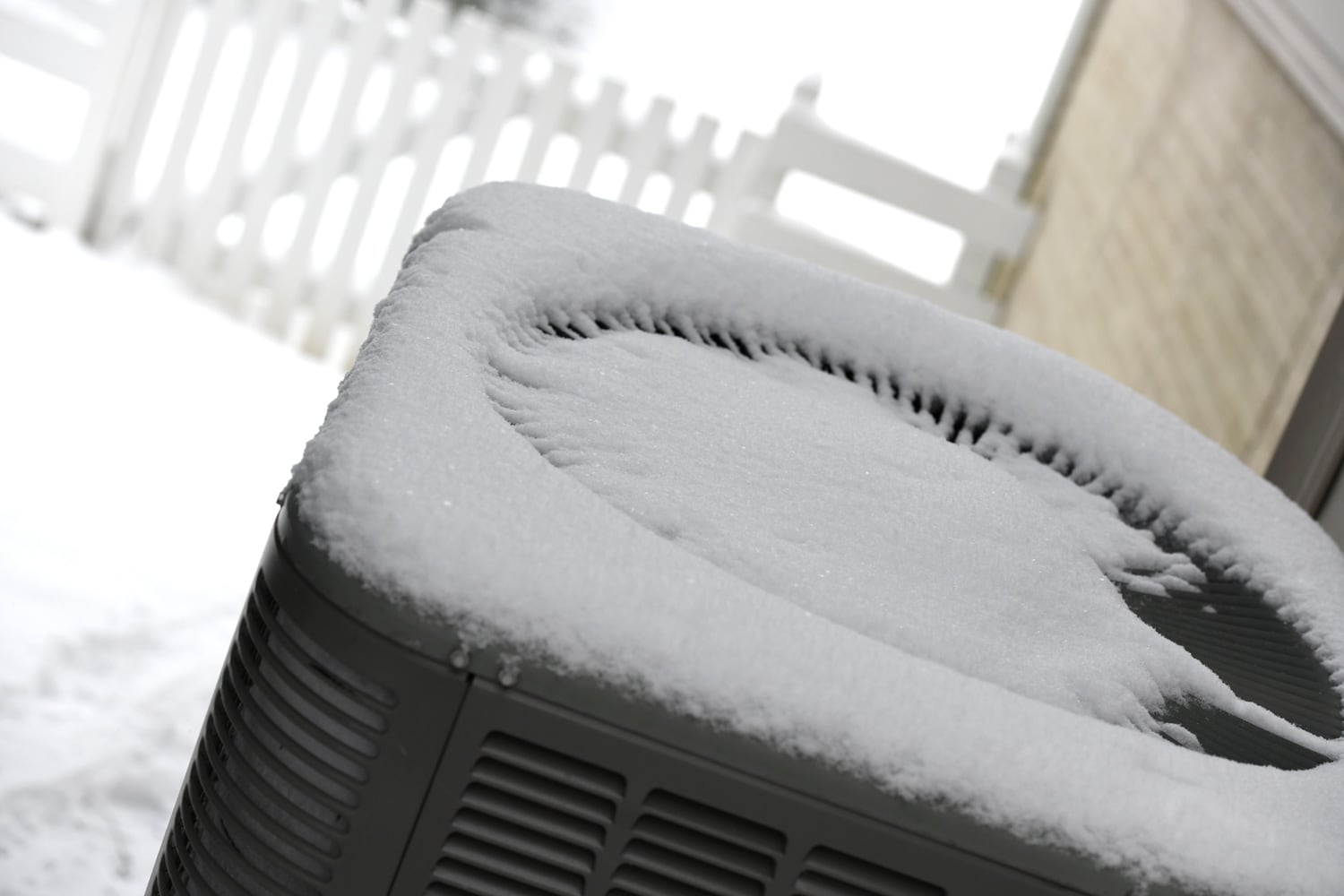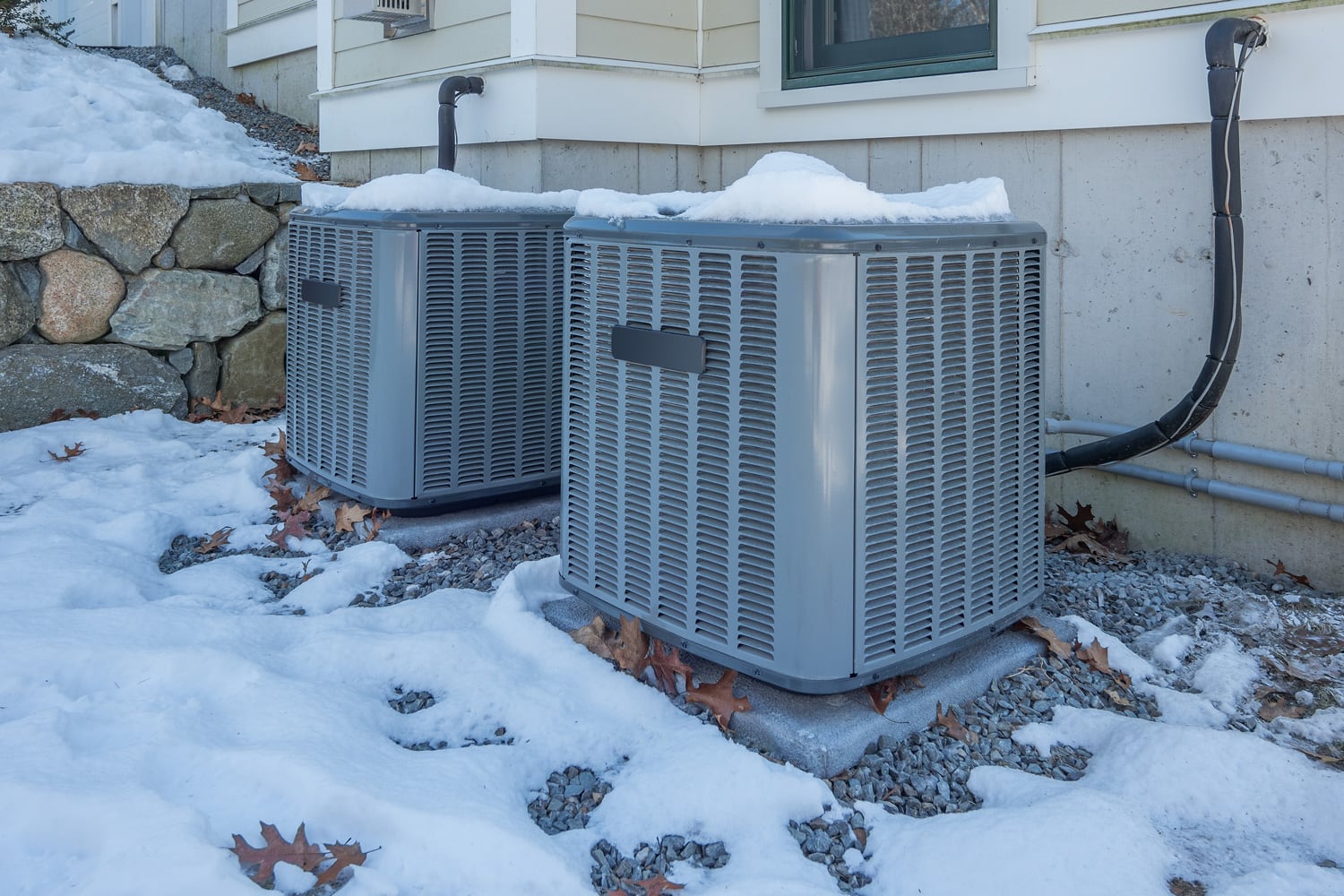Heat pumps are vital equipment in your home, especially during the winter season. In such a harsh cold-weather state, they can stop the ice build-up in the heat pump. Even so, you often wonder how much ice can my heat pump will hold?. Well, wonder no more!
In general, if the ice build-up begins to block the heat pump coils, this is too much for the unit. In addition, if ice shreds are fully covering the heat pump fins, otherwise, your unit has too much ice accumulation.
Read on as we discuss below how much ice is standard for heat pump units. We will also touch on some basic queries that might interest you. With that said, let's jump into this discussion!

How Much Ice Is Normal On A Heat Pump?

In winter weather, it's common for the entire coil to build an ice shred or even light ice. However, it is unusual for the whole unit, including the top of the heat pump and the insides of the coil, to stay buried in snow.
On the other hand, excessive ice might harm your heating system and lead it to cease working entirely. If you want to maximize your heat pump performance effectively, you'll need to:
Fix Your Insulation System
Insulation alone might save you a great deal of money on your energy bill. Your heat pump unit will not have to operate as hard if your walls and ceiling are properly insulated.
Evaluate Your Locations Climate Condition
Many heat pumps are unable to cope with extreme temperature changes. If you reside in a cooler climate, you'll need a heat pump to deal with the cold efficiently.
Choose The Right Heating Unit
If the heat pump unit is too small for your house, it may struggle to deliver sufficient heat and will be more costly to run. If the unit is too large, though, it will use more power to heat your home than is necessary.
Furthermore, various heat pumps operate in different ways. A split system, for example, is meant to heat only one room and is ideal for open-plan living spaces.
Ducted systems use several ducts in the ceiling to heat various rooms.
Utilize Timer Settings
Set the timer for half an hour before you arrive home to ensure you always return home to a warm house. You may even program the timer to turn on the heater when you get off the bed in the morning.

How Do I Keep Ice Off My Heat Pump?
Typically, most heat pumps have a built-in feature called "DEFROST MODE," able to detect when your heat pump is about to freeze.
In addition, its functions will order the machine to send back the refrigerant from the outside unit to the condenser. Furthermore, this helps melt the ice that has gathered on the condenser's coils.
You can also manually remove the ice or snow on your HVAC unit by gently wiping off the unit.
WARNING: Don't try to touch the unit while working. Ensure to shut off the unit's power before touching it!
How Often Should A Heat Pump Defrost?
When there are icy elements, heat pumps defrost frequently. The amount of cycles that your heat pump enters the defrost mode is based on various factors.
This includes air temperature, outdoor humidity, and heat pump operation efficiency.
Generally, the unit will run its first defrost mode for about 35 minutes. However, completing the whole cycle will take about 40 minutes, set by the HVAC control system.
Determining The Defrost Mode Signs
- Defrost light indicator will flash.
- The unit stops working.
- A rumbling-like sound will be noticeable.
- You can see the water flow underneath the HVAC unit.
- The heat pump unit will start releasing water vapor or smokes.
After the defrost cycle is complete, the following signs will appear:
- The defrost light sign will flash again.
- A booming sound will start to show.
- The unit will start, and the fins will gradually spin.

When Should You Use Emergency Heat?
If something goes wrong with the first stage set up in your heat pump, you should turn on the emergency heat set up for an emergency.
For instance, if a tree is pushed down during an ice storm and breaks your heat pump unit, you should turn on your emergency heat and contact an HVAC technician.
Should I Turn Off My Heat Pump During An Ice Storm?
The top of the unit will ice up in a storm, and the fin will cease to turn in some instances. So better to turn off the unit and utilize the backup heat setup to keep your house warm.
Furthermore, you can prevent any possible damage to your heat system by shutting the unit off during the storm. Taking protective measures to avoid damage to your heat pump unit is vital.
Therefore you must:
Check The Heat Pump Nearby Area
Check for tree limbs that may threaten your unit during a storm.
Look for leaks in the gutters around you. If your gutter leaks and the water freezes on your HVAC unit, it could block airflow and cause the system unit to freeze.
Clear Out The Ice Build Up
Check for any snowfall that could break off and cause damage to your HVAC equipment. Heavy snow or ice accumulation on your outside unit can cause severe issues that might lead to significant repairs.
Change The Units Air Filter
You should replace air filters at least every three months. Clean filters imply less effort for your heat pump unit to operate.
See this heat pump filter on Amazon.
What Is The Best Setting For A Heat Pump?
The temperature you set for your heat pump might impact its performance and power usage. In the summer: put the heat pump to 23-26 degrees (cooling), and in the winter, set it to 18-21 degrees (heating).
In contrast, setting the thermostat to excessively low temperatures in the summer and extremely high in the winter might overwork the unit and cause it to consume more energy.
What Temperature Should I Set My Heat Pump To In The Winter?
During the fall and winter months, 68°F is the ideal spot for comfort and energy efficiency. When your home is crowded, the recommended heat pump set is about 68°F to keep the living spaces warm enough.
To save up to10% on energy, lower the temperature by 7 to 10 degrees overnight or for nine hours during the day. When the temperature difference is 10 degrees or greater, the heat pump may turn on its reserve electrical heat setup, which is more costly.

Is It OK For A Heat Pump To Run All Night?
Heat pumps are super-efficient machines. This is one of the reasons why many people opt for a heat pump as their primary source of heat in the winter. However, they should not be left running all night.
It is not cost-effective to leave them operating 24 hours a day. When you are not using your HVAC unit, you should shut it off. Doing so will help the unit to avoid wasting too much energy.
Can You Pour Hot Water On A Frozen Heat Pump?
Yes. You can melt snow and ice by pouring hot or warm water over your heat pump. You can also use cold water from a hose in some areas that aren't too chilly.
A common method of thawing a frozen heat pump is to pour hot water on it. Scraping off snow and ice using sharp, metal tools can cause damage to your unit.
To Wrap It Up

Throughout this article, we've learned how much is too much ice on your outdoor heat pump unit. You've also learned how to keep off the ice from your unit and prevent it from building up.
We've discussed how to maximize your heat pump's overall operation efficiency during winter. We hope that all of this detailed and helpful information will benefit you in how you care for and maintain your heat pump.
Made it this far? Check out these related articles below!

